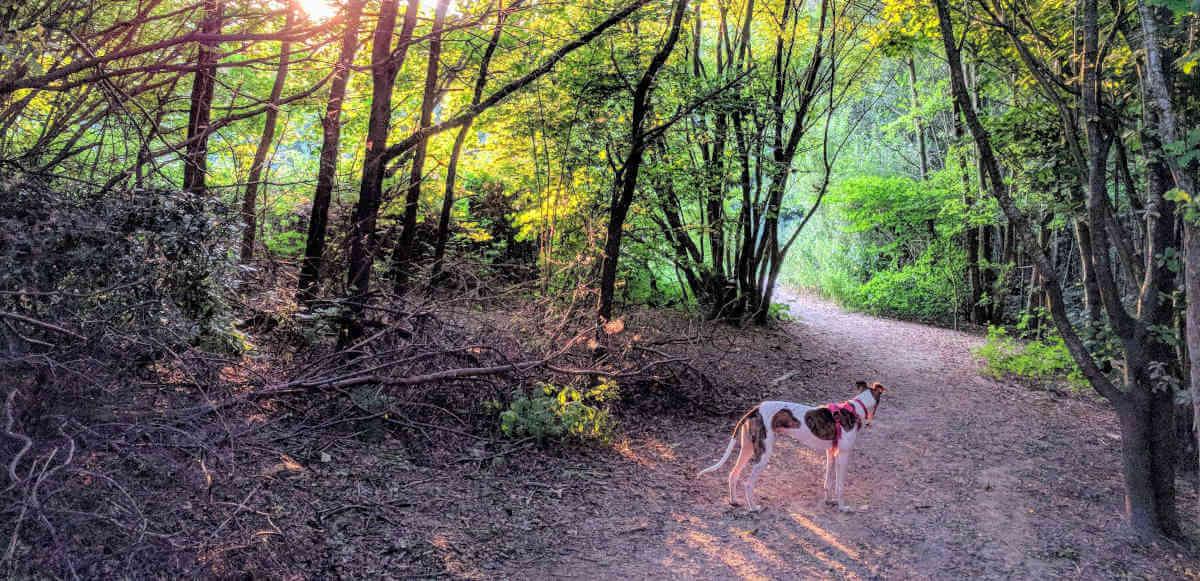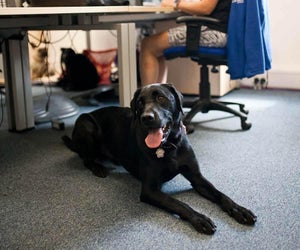
Is your dog pulling, barking, or trying its best to run away? Your little bundle of fun might seem mischievous – but it’s just so excited to explore the world. Teaching your dog how to go walkies is a vital part of dog training. And so, to make your life easier, we’ve given you five ways to help have enjoyable walks with your best friend.
1. Start as you mean to go on
If you can, before you start taking your dog out for walks, teach them how to sit and to respond to their name when you call. Walking along roadsides can be dangerous and you want to be sure that your dog will listen to your command when you ask them to do something. When getting your dog ready for a walk, ask them to sit before you put their collar or harness and lead. Many dogs will get very excited at the prospect of going out for a walk and can get so focused on going outside that they are unaware of what you are saying to them. If they are bouncing around every time you try to get them ready, ignore them until they regain some focus and sit calmly. Using treats as a reward will help them learn to focus and sit still whilst you do this.
2. Schedule enough time for your walks
Dogs, like you, are diurnal and so they prefer to walk in the daytime. What this means is that the best time to take your dog is in the morning. Swing those legs out of bed first thing and take a brisk walk outside – you’ll both love it.
3. Reward your dog during the walk
It’s all about positive reinforcement – that’s how dog training works. And by rewarding your dog’s good behaviour during the walk they’ll learn that’s how they get treated. These rewards can come in the form of allowing your dog to sniff around at their own pace, letting them off the leash to play ball, or giving them a food treat (which should be taken from their daily calorie allowance – James Wellbeloved Minijacks and Crackerjacks perfectly complement our range of foods and are great for treating adult dogs). Consistently reward your dog for walking next to you. If they pull ahead, stand still and wait for them to come back to you – it may take them a while to understand what you are doing but they will soon learn to stick with you and they’ll learn to refocus on you by themselves.
4. Keep that lead short
When initially training your dog, keep them on a short, slack lead. This will help them stay focused on you as they won’t be able to roam around and become distracted by as many smells. It will also be quicker for the dog to come back to you if they pull ahead, as mentioned in the step above. When your dog has learnt to stay with you, or come back quickly when you call, you can put them on a longer lead. And finally…
5. The walk isn’t necessarily for you, but it is definitely for your dog!
Whilst you want to ensure that your dog walks politely on a lead, you also want to make sure your dog gets the most from their walk. Let them sniff around lampposts and bushes, let them explore a bit, and let them say hello to other dogs if they (and the other dog) want to! Dogs gain so much information about their environment from different smells so it’s important that they are given the opportunity to carry out these behaviours, and improve their social skills by making new friends if they want! The most important thing that you should take away with you is that you want to make walks an enjoyable experience for you and your dog! Positive reinforcement is the best training tool you can have – your dog will want to work with you if they know they’re going to have a great time. Whilst treats are useful when training your dog, hopefully, after a while, the prospect of going on an adventure or getting to play with their favourite toy will be the best reward!

Related Articles








